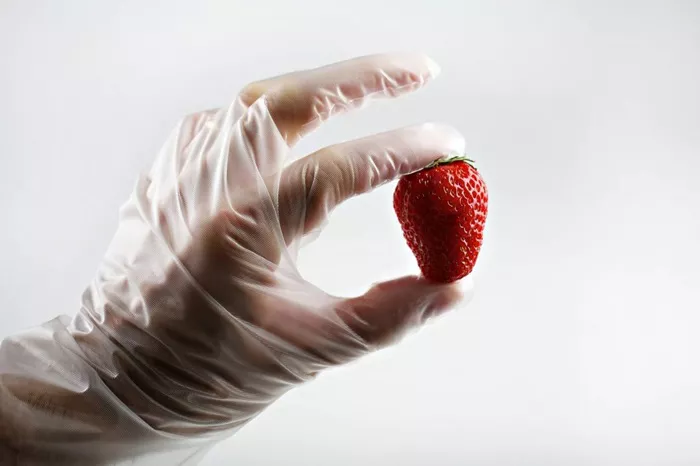Latex allergy is a significant health concern affecting numerous individuals worldwide. It’s characterized by an allergic reaction to certain proteins found in natural rubber latex, derived from the rubber tree (Hevea brasiliensis). What many might not realize is that this allergy can extend beyond direct contact with latex products. There’s a fascinating cross-reactivity between latex and certain fruits, often leading to what is known as the latex-fruit syndrome. This article delves into the intricacies of this syndrome, identifying the fruits related to latex allergy, the underlying mechanisms, diagnosis, management strategies, and the implications for those affected.
Understanding Latex Allergy and Its Cross-Reactivity with Fruits
Latex Allergy: An Overview
Latex allergy involves an immune system reaction to proteins in natural rubber latex. Exposure can occur through skin contact, inhalation of latex particles, or by using products made from natural rubber latex. Reactions can range from mild (such as skin irritation and hives) to severe (such as difficulty breathing and anaphylaxis).
The Concept of Latex-Fruit Syndrome
Latex-fruit syndrome is a condition where individuals allergic to latex also experience allergic reactions to certain fruits. This occurs due to the similarity in protein structures found in latex and those in various fruits, causing the immune system to react to both.
Fruits Commonly Associated with Latex Allergy
Identifying the Culprits
Several fruits have been identified that may cause allergic reactions in individuals sensitive to latex. These include, but are not limited to:
1. Bananas
2. Avocados
3. Kiwis
4. Chestnuts
5. Papayas
6. Mangoes
7. Passion Fruits
8. Figs
9. Nectarines
10. Melons
11. Tomatoes
12. Peaches
These fruits contain proteins that mimic those in latex, leading to an immunological cross-reaction in susceptible individuals.
The Science Behind Cross-Reactivity
Molecular Mimicry: An Immunological Explanation
The primary mechanism behind the cross-reactivity seen in latex-fruit syndrome is molecular mimicry. Certain proteins in latex resemble those in some fruits, confusing the immune system, which may react to both. The most notable among these proteins is Hev b 6.02, a major latex allergen, which has structural similarities to proteins found in bananas, avocados, and kiwis.
Diagnosis of Latex-Fruit Syndrome
Clinical Evaluation and Allergy Testing
Diagnosing latex-fruit syndrome involves a combination of clinical history, physical examination, and specific allergy tests. Skin prick tests (SPT) and serum-specific IgE tests to latex and various fruits can help confirm the diagnosis.
Management of Latex-Fruit Syndrome
Avoidance and Emergency Preparedness
The primary management strategy for latex-fruit syndrome is the avoidance of both latex and the implicated fruits. Individuals diagnosed with this condition should be educated about the potential sources of latex and cross-reactive fruits. Additionally, they should carry an epinephrine auto-injector in case of severe allergic reactions.
Nutritional Considerations and Alternatives
Maintaining a Balanced Diet
Avoiding multiple fruits can pose challenges to maintaining a balanced diet, particularly concerning the intake of vitamins and antioxidants that fruits provide. Dieticians can help in formulating a diet plan that substitutes other fruits and vegetables that do not trigger allergic reactions, ensuring nutritional balance.
Implications for Daily Living
Navigating Daily Challenges
Individuals with latex-fruit syndrome need to be vigilant about the presence of latex and certain fruits in everyday products. Latex can be found in unexpected places such as medical devices, dental supplies, clothing, and household items. Similarly, fruit derivatives can appear in food products, cosmetics, and pharmaceuticals.
Future Directions in Research and Treatment
Advancements in Understanding and Care
Ongoing research into latex-fruit syndrome is crucial. Future studies are expected to delve deeper into the molecular basis of cross-reactivity, which could lead to more targeted therapies and potentially, desensitization treatments. Improvements in diagnostic methods are also anticipated, which would facilitate earlier and more accurate detection of this syndrome.
Conclusion
Latex-fruit syndrome is a complex interplay between food and environmental allergens, posing significant lifestyle and dietary challenges for those affected. Understanding the fruits related to latex allergy and the mechanisms of cross-reactivity is essential for effective management. With careful avoidance strategies, emergency preparedness, and ongoing research, individuals with latex-fruit syndrome can lead safe and healthy lives. Awareness and education on this topic are crucial for patients, healthcare providers, and the public to improve outcomes and enhance the quality of life for those dealing with this unique and challenging allergy syndrome.
[inline_related_posts title=”You Might Be Interested In” title_align=”left” style=”list” number=”6″ align=”none” ids=”8376,8372,8369″ by=”categories” orderby=”rand” order=”DESC” hide_thumb=”no” thumb_right=”no” views=”no” date=”yes” grid_columns=”2″ post_type=”” tax=””]
































